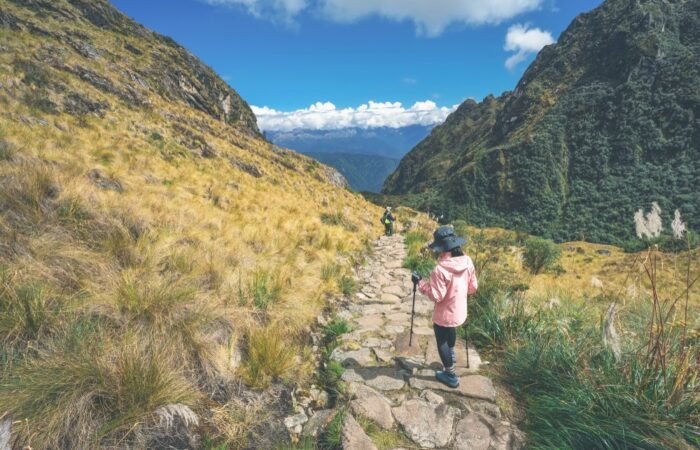

Discover the new rainbow mountain in Peru, just a few hours from the city of Cusco. In the middle of a practically virgin tourist circuit is one of the most impressive natural wonders of Latin America. Travel towards the Cusco highlands and be amazed by a mountain that seems to have been wrapped in a colorful Andean poncho full of ancestral iconography.
If you’ve been to Cusco, you’ll remember that Andean clothing is handwoven and adorned with different geometric drawings. Some of these symbols are quite abstract and others portray people or animals. Those drawings, icons, pictograms, motifs, or designs that adorn Andean clothing are known in Quechua as “pallay”. The pallay also expresses the fundamental concepts of Andean philosophy such as ayni (reciprocity) or yanantin (complementarity), among others.
And it’s the peaks of Pallay Punchu that honor its name: “poncho adorned with pallay” because this is exactly what this colorful sector of the Apu T’acllo, the district guardian deity, looks like. It seems that the sacred mountain has covered its giant body with a colorful poncho woven in the Andes of Peru.
To visit the Apu T’acllo, where Pallay Punchu, also known as the Sharp Mountain of Colours, is located, you must reach the town of Layo, capital of the district of the same name, which is bordering 4,000 masl / 13,123 fasl.
Layo is practically a virgin destination for international tourism. It’s located on the banks of the impressive Langui-Layo lagoon and the people there have proudly preserved their traditions for millennia. Layo stands out not only for its amazing landscapes but also for its delicious gastronomy as it’s a livestock and agricultural district. You can enjoy the delicious meat of the guinea pig, a trout ceviche, or a creamy cheese while you observe the immensity of the lake waters.
Layo is approximately 4 hours by car from the city of Cusco. You first need to reach the city of Sicuani (3,550 masl / 11,646 fasl) and then board a car to get to the town of Layo.
From there, there are several routes to the colorful sector of Pallay Punchu. Some routes are extreme and you may find yourself in a rush to climb. So we recommend you to enjoy this adventure in the company of an expert guide who knows the area well.
On average, you’ll have to walk at high altitude and climb for about 2 hours to the viewpoint. After the walk, prepare to feel like you’re flying over the surface of another planet. The edges of Pallay Punchu — cream, magenta, brown — spread out toward the steep mountain slope in mind-blowing patterns. Take some time to understand what it means to contemplate these pyramids patiently sculpted by Mother Earth, or Pachamama, for millions of years.
On the one hand, you’ll be able to observe the fullness and the dark waters of the immense Langui-Layo lagoon. On the other, you’ll see mysterious and sharp mountains amidst valleys of red earth. Open your arms as if you were an Andean condor, feel the cold wind of the Cusco highlands, and let your mind fly away.
Remember that you’ll reach 4,700 masl / 15,419 fasl, so take precautions. If you want to visit this natural wonder, we recommend you arrive in Cusco (3,400 masl / 11,154 fasl) at least 2 days in advance to acclimatize. It’s important to drink plenty of fluids and avoid consuming alcohol, coffee, and cigarettes. Altitude sickness can be very unpleasant since its symptoms include: severe headache, shortness of breath, vomiting, diarrhea, etc. Nobody wants to feel like this in the middle of the mountain.
In Layo, you can stay in community hotels and live an authentic cultural experience while contributing to the growth of the economy of local families. These accommodations are private, comfortable, and very pleasant. Take the opportunity to make new friends and immerse yourself in the warmth of the Andean culture. Dare to try the varied and delicious gastronomy of the area and navigate the blue waters of the lagoon before returning to the turmoil of the city. And if you have a little more time, just 20 minutes by car away, you can enjoy a relaxing dive in the thermos-medicinal waters of Exaltación.
Pallay Punchu the new rainbow mountain
by Peru Hike